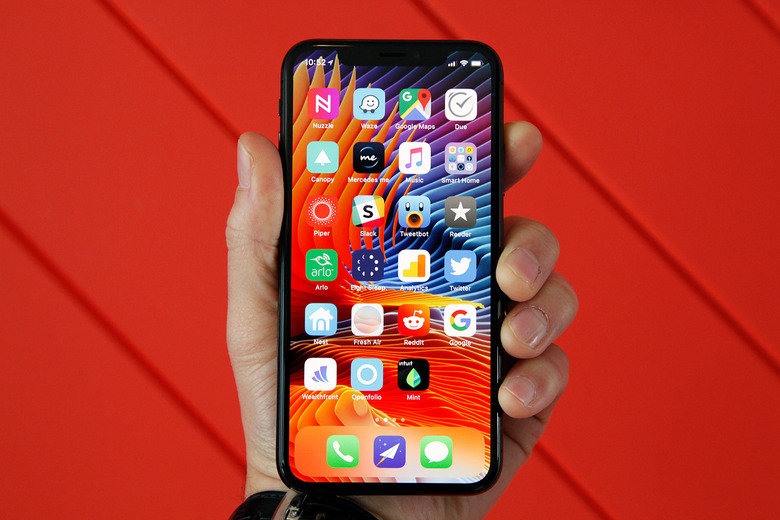The iPhone X Is Being Outsold By A 4-Year-Old iPhone Design
In the leadup to the iPhone X reveal last year, analysts were visibly salivating at the prospect of an iPhone upgrade "supercycle," a tidal wave of profitability that would sweep Apple stocks to never-before-seen heights and truly enthrone Apple as the king of all smartphone makers.
That first part — the iPhone X leading an upgrade supercycle — never quite happened, but not necessarily for the reasons that analysts predicted. Rather than facing stiff "competition headwinds" from a resurgent Android industry, the iPhone X's worst enemy has been one coming from inside: The old iPhone design that just refuses to die.
A new report from Consumer Intelligence Research Partners found that the iPhone X has been squeezed out by sales of Apple's older iPhones. Sure, you'd expect the iPhone X to be outsold by the cheaper iPhone 8 and iPhone 8 Plus, and it was, with the iPhone X capturing only 16% of iPhone sales, compared to 44% for the iPhone 8 and iPhone 8 Plus.
But the real surprise comes when looking at sales of the iPhone 7 and iPhone 6S families. The iPhone 7 and iPhone 7 Plus — yep, two-year-old phones — actually outsold the iPhone X, accounting for 20% of iPhone sales in Q1 2018. The iPhone X only barely outsold the iPhone 6S family in the same quarter, with the iPhone X grabbing 16% of sales and the iPhone 6S and 6S Plus combining for 13%. Even the iPhone SE, a device that was mid-level when it was introduced and which hasn't been updated in over a year, grabbed 8% of iPhone sales.
"After the initial excitement over the iPhone X features, the highest priced flagship appears to have settled into a smaller share of sales," said CIRP co-founder Josh Lowitz. "Surprisingly, iPhone models introduced in 2015 and 2016 continued to show strong sales," added Mike Levin, CIRP's other co-founder. "The year-old iPhone 7 and 7 Plus accounted for almost one-fifth of sales, and the two-year old iPhone 6S and 6S Plus had 13% of sales. Even the SE held its own at 8%, down slightly from 11% in the year-ago quarter, and actually up slightly over the December 2017 quarter. With eight models available, and the newest ones costing close to $1,000, consumers appear to want older, cheaper models that have many of the same features."
The one big caveat to this is that CIRP's data is based on a relatively small consumer survey, rather than supply-chain or sales data. CIRP surveys 500 US-based Apple customers every quarter to collect its data. The reports are less useful as an empirical measure of Apple sales, and better at tracking trends within the industry. However, CIRP's survey is long-running and has historically been a good indicator of Apple's own sales data, so it's certainly worth considering.
CIRP's data also makes sense when viewed against other reports of iPhone X production, and particularly reports about what Apple is going to release this year in iPhone-world. The company is predicted to launch three new iPhone models this year: An iPhone X follow-up with a similar screen size and features, a bigger iPhone X Plus, and some kind of large, cheaper iPhone with an LCD screen. The iPhone X2 and LCD iPhone may well undercut current pricing: Predictions suggest that the iPhone X2 might receive a price cut to $899 (from the iPhone X's $999 pricepoint) and the LCD iPhone could be much cheaper, at around $650/700.
That would fix the biggest complaint about the iPhone X, which has certainly been the price. Ever since releasing the first iPhone, Apple and the Android industry have competed heavily on pricing. The flagship iPhone and flagship Samsung device have almost always had a price within $50 of each other, but Apple went a little higher than the rest of the competition this year. The Galaxy S9, which had all the features to properly compete with the iPhone X, undercut it with a $720 pricetag, and even the Galaxy Note 8 was only $920.
